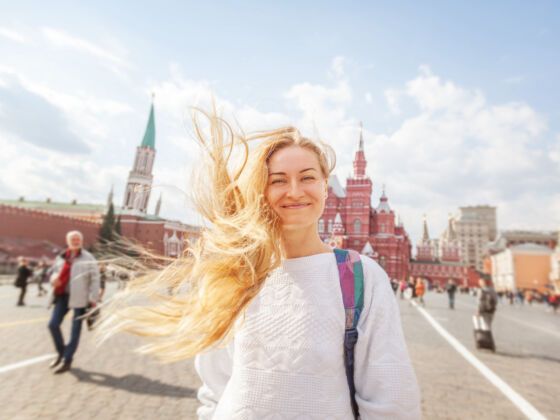1. Don’t… stick to Red Square
Red Square is, literally and figuratively, the center of Moscow. The iconic onion domes of St. Basil’s Cathedral and imposing walls of the Kremlin are indeed worth seeing. But don’t spend all your time there.
Overrun with tourists and street vendors hawking piles of mass-marketed souvenirs, the atmosphere of Red Square is not representative of Moscow.
